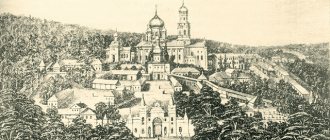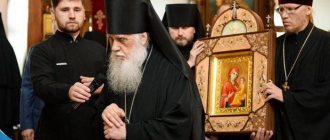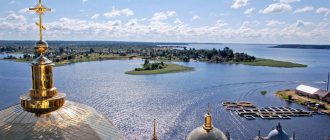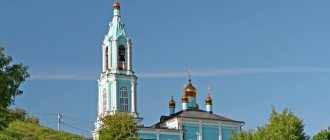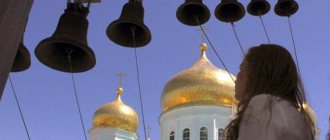Mir
Russia Kursk region Svoboda village Kursk Root Christmas-Virgin Hermitage The map is loading…
{"format":"leaflet","minzoom":false,"maxzoom":false,"limit":50,"offset":0,"link":"all","sort":[""], "order":[],"headers":"show","mainlabel":"","intro":"","outro":"","searchlabel":"\u2026 \u0441\u043b\u0435\ u0434\u0443\u044e\u0449\u0438\u0435 \u0440\u0435\u0437\u0443\u043b\u044c\u0442\u0430\u0442\u044b","default":"","import-annotation":false,"width ":"auto","height":"350px","centre":{"text":"","title":"""link":"""lat":51.90712700000000268119038082659244537353515625,"lon": 34.99277599999999921465132501907646656036376953125,"icon":""},"title":"","label":"","icon":"","lines":[],"polygons":[],"circles":[ ],"rectangles":[],"copycoords":false,"static":false,"zoom":8,"defzoom":14,"layers":["OpenStreetMap"],"image layers":[] ,"overlays":[],"resizable":false,"fullscreen":true,"scrollwheelzoom":true,"cluster":false,"clustermaxzoom":9,"clusterzoomonclick":true,"clustermaxradius":80, "clusterspiderfy":true,"geojson":"","clicktarget":"","showtitle":true,"hidenamespace":false,"template":"","userparam":"","activeicon": "","pagelabel":false,"ajaxcoordproperty":"","ajaxquery":"","locations":[{"text":"\u003Cb\u003E\u003Ca href=\"/palomnik/%D0% 9A%D1%83%D1%80%D1%81%D0%BA%D0%B0%D1%8F_%D0%9A%D0%BE%D1%80%D0%B5%D0%BD%D0%BD% D0%B0%D1%8F_%D0%A0%D0%BE%D0%B6%D0%B4%D0%B5%D1%81%D1%82%D0%B2%D0%BE-%D0%91%D0 %BE%D0%B3%D0%BE%D1%80%D0%BE%D0%B4%D0%B8%D1%87%D0%BD%D0%B0%D1%8F_%D0%BF%D1%83 %D1%81%D1%82%D1%8B%D0%BD%D1%8C\" title=\"\u041a\u0443\u0440\u0441\u043a\u0430\u044f \u041a\u043e\u0440\u0435\u043d \u043d\u0430\u044f \u0420\u043e\u0436\u0434\u0435\u0441\u0442\u0432\u043e-\u0411\u043e\u0433\u043e\u0440\u043e\u0434\u0438\ u0447\u043d\u0430\u044f\ u043f\u0443\u0441\u0442\u044b\u043d\u044c\»\u003E\u041a\u0443\u0440\u0441\u043a\u0430\u044f \u041a\u043e\u0440\u0435\u043d\u 043d\u0430\u044f\u0420\ u043e\u0436\u0434\u0435\u0441\u0442\u0432\u043e-\u0411\u043e\u0433\u043e\u0440\u043e\u0434\u0438\u0447\u043d\u0430\u044f \u0 43f\u0443\u0441\u0442\u044b \u043d\u044c\u003C/a\u003E\u003C/b\u003E","title":"\u041a\u0443\u0440\u0441\u043a\u0430\u044f \u041a\u043e\u0440\u0435\u043d\u04 3d\ u0430\u044f \u0420\u043e\u0436\u0434\u0435\u0441\u0442\u0432\u043e-\u0411\u043e\u0433\u043e\u0440\u043e\u0434\u0438\u0447\u0 43d\u0430\u044f\u043f\u0443 \u0441\u0442\u044b\u043d\u044c","link":"","lat":51.90712700000000268119038082659244537353515625,"lon":34.992775999999999214651325019 07646656036376953125,"icon":""}],"imageLayers":[]}
51.907127; 34.992776
Russia, Kursk region, Khomutovsky district, Svoboda village
Svoboda village, Kursk region
Russia
Phone numbers of monastery services
:
Kursk Root Christmas-Virgin Hermitage
- a men's monastery in the Kursk region, founded on the supposed site of the appearance of the Kursk Root Icon.
About the monastery[edit]
Among the ancient Russian monasteries, one of the most famous for a long time is the Kursk Root Nativity of the Blessed Virgin Mary hermitage.
It is located above the high sandy bank of the Tuskar River in the village of Svoboda, not far from the city of Kursk. The monastery was founded in 1597 by decree of the Tsar and Grand Duke Fyodor Ioannovich on the site of the discovery of the miraculous icon “The Sign” of the Kursk Root. The first abbot of the monastery was Abbot Euthymius. The monastery was named after the icon of the Most Holy Theotokos, found at the root of a tree, and therefore called the Root.
Today the monastery has 35 inhabitants. The Holy Archimandrite of the monastery is His Eminence Herman, Metropolitan of Kursk and Rylsk. His deputy is Abbot Seraphim (Kotelnikov). Divine services in the monastery take place on a full daily basis. Daily prayers are served in front of the list of the miraculous image of the Mother of God “The Sign”.
It was not by human will or “random” coincidence that this place was chosen for the salvation of human souls. The Queen of Heaven herself pointed to him with the miraculous appearance of Her Image at the edge of a dense forest. Since then, prayer has not ceased here for more than seven centuries.
Shrines of the Nativity of the Virgin Mary Hermitage
One of the main shrines of this wonderful place is the “Sign” icon. It was this that hunters found in this place a long time ago, after which a temple was created here, and then a desert. The icon repeatedly showed miracles to the world and streamed myrrh, so it was almost immediately ranked among the miraculous.
Icon "The Sign"
Also here are the holy relics of the venerable Kiev-Pechersk and Optina elders. Thousands of pilgrims flock here to touch the holy remains.
Temples[edit]
It is common for monasteries to have several temples. Our monastery was no exception. The main monastery church - the Cathedral of the Nativity of the Blessed Virgin Mary - was consecrated by His Holiness Patriarch Kirill of Moscow and All Rus' on September 24, 2009, the right chapel was consecrated by the bishop's rank on December 22, 2011 in honor of the Nativity of John the Baptist.
- Church of the Nativity of the Blessed Virgin Mary - consecrated by His Holiness Patriarch Alexy II on September 19, 1991.
- The Temple of the “Kazan” Icon of the Mother of God was consecrated by the bishop on July 21, 1991.
- Church of the Icon of the Mother of God “Life-Giving Spring” - consecrated by the bishop’s rite on September 24, 2012.
- Church of the Great Martyr Panteleimon (Hospital building),
- Temple of St. Seraphim of Sarov at the monastery courtyard.
Divine services are held mainly in the Cathedral Church, as well as on patronal holidays and in other churches of the monastery.
Information for pilgrims and tourists
The following information will be useful to those who decide to make a pilgrimage or to the Root Men's Hermitage:
How to get there
There are several ways to get to the holy monastery. The simplest and most convenient: from the city of Kursk at the railway station, take a minibus that departs from the Dubrovinskoye stop. Here, every twenty minutes, gazelles begin their route and make their way to the village of Svoboda. The distance from Kursk to Svoboda metro station is 33 km, travel time is approximately 35 minutes;
Where to stay
On the territory of the monastery there are several hotels for tourists and pilgrims. This is hotel No. 1 “White” and No. 2 “Red”. At the same time, guests are accepted only at the Krasnaya Hotel, since the first one is for church ministers and monks.
Cost of living for one person:
- Single 400 rub.;
- Multi-seat 200 rub.;
- Triple 250 rub.;
- Double 300 rub.
The hotel has been recently renovated and is in good condition, has all the necessary amenities, is clean and bright, with beautiful views of the surrounding landscape of the monastery;
Excursions
On the territory of the Root Desert, free excursions around the temple complex and the surrounding area are held for everyone. The abbot will tell you about the history of the monastery, its difficult fate, and restoration work to restore the main architectural ensembles. It will also show the location of the holy springs and shrines of this place. If you wish, you can make a donation to the needs of the monastery;
Schedule of services
The monastery is open all the time from 6:30 to 23:00. Main services are held according to the following schedule:
- Morning prayer 7:00;
- A prayer service in honor of the “Sign” icon is held with the participation of all clergy and with choral singing only on Saturday at 7:40;
- Confession, liturgy and memorial service at 8:30;
- Evening service at 18:00;
- Compline with prayers 21:00.
Please note: the main celebration takes place on September 21st. This is a special date when the Nativity of the Blessed Virgin Mary is celebrated.
More detailed information about the work of the monastery, excursions and services can be found on the official website of the monastery.
The indigenous desert is truly a special place. This picturesque place is imbued with the holy spirit. After all, how else can one explain the amazing perseverance and endurance of the monastery. Despite its long history of almost five hundred years, this place has retained its historical significance, remaining a holy monastery.
For interesting information about the monastery, watch the following video:
Holy springs[edit]
The holy springs on the territory of the monastery have not dried up either. As before, holy water from the life-giving springs of the Root Hermitage gives strength and strengthens Orthodox people in the faith. There are several holy springs in the monastery:
- Source at the site of the appearance of the miraculous icon of the Mother of God “The Sign” of the Kursk Root in 1295.
- Source of St. Nicholas the Wonderworker,
- Source of St. Seraphim of Sarov,
- Source of the “Kazan” Icon of the Mother of God,
- Source of the Great Martyr Panteleimon,
- Source of St. Seraphim of Sarov (monastery).
There are also fonts for ablution at the site of the appearance of the miraculous icon and at the source of St. Nicholas the Wonderworker.
Fate during the revolution and during the Soviet period
After the onset of Soviet power and the overthrow of Emperor Nicholas II, a difficult time came for the Orthodox Church in Rus'.
It marked the destruction of all the principles and ideals of the faith, everything sacred that was in churches and cathedrals. Most of them were plundered and destroyed or converted into civilian objects. The Root Desert did not escape this fate, for which the most difficult time in its entire existence had come. Already in 1918, it was renamed “Svoboda Shtetl,” and the holy monastery lost its right to officially represent the Orthodox Church, losing its legal force. In 1922, all valuables and shrines were removed from the monastery according to a special program developed by the All-Russian Central Executive Committee.
This is interesting: in 1923, the monastery was completely closed, there was absolutely nothing left suitable for existence, and all the monks and clergy were released around the world.
Despite this, some devoted people remained huddled in dugouts nearby, whiling away their days in prayer. Many buildings were destroyed brick by brick, including two tiers of the bell tower; the unique library was taken away along with holy icons and other valuables. The area adjacent to the monastery has also changed.
The unique Bogoroditskaya grove with relict oak forests was cut down, crops with medicinal herbs were destroyed. Later, a fountain was built on the site where the cathedral stood, and the Freedom camp was opened in the monastery building itself. During the war, many buildings were destroyed, and in those that remained intact, a vocational school was organized in 1947.
After all the hardships, only in 1989 they began a program to restore the holy, desecrated place. Through the enormous efforts of the Diocese of Kursk and Archbishop Juvenal, the legal significance of the monastery was returned to the Kursk Hermitage, and the land came under the authority of the Orthodox Church. Only in 1990 was the restoration completed. In honor of this solemn event, a religious procession was organized. It was the first in many decades of Soviet power.
Patronal holidays[edit]
Nativity of the Blessed Virgin Mary
- September 21
Icon of the Blessed Virgin Mary “Kazan”
— July 21, November 4
Icon of the Most Holy Theotokos “Life-Giving Spring”
- Friday of Holy Week
Panteleimon, healer, great martyr
— August 9
Seraphim of Sarov, Rev.
— January 15, August 1
Abbots and governors
| This section is not completed. You will help the project by correcting and expanding it. |
- Palladium (Belevtsev) (1815-1818)
- Macarius (1818-1820), transferred from the Polotsk Epiphany Monastery, and then to the Alexander-Svirsky Monastery.
- Parfeniy, archimandrite (1820—...), former sacristan of the Alexander Nevsky Lavra
- Yuvenaly (Polovtsev) (May 8, 1862 - December 21, 1867)
- Gregory (Krentsiv) (1994)
- John (Rudakov) (1994—2004)
- Veniamin (Korolev) (December 24, 2004 - August 29, 2012)
- Seraphim (Kotelnikov) (from August 29, 2012) to July 16, 2013 - acting. O. governor
Kursk Icon of the Mother of God “The Sign”[edit]
The Orthodox icon of the Mother of God with the Child, surrounded at its edges by images of the Lord of Hosts and the Old Testament prophets, is revered as miraculous, and belongs to the Orant (Sign) icon painting type.
According to legend, the icon was found on September 8, 1295, on the day of the Nativity of the Blessed Virgin Mary, in a forest not far from Kursk, which was burned by the Tatars. The hunter found a small icon lying face down on the root of a tree, and when he lifted it to examine it, a spring began to flow from the place where the icon lay. At this place, together with his comrades, he cut down a small chapel, where the icon was placed.
During the Civil War, the icon was in the Kursk Znamensky Monastery. At the end of October 1919, when the troops of General A.I. Denikin left the city, the icon was taken from Kursk. Her further journey passed through Belgorod, Taganrog, Rostov-on-Don, Ekaterinodar, Novorossiysk.
Rev. Seraphim of Sarov was born and raised in Kursk. In 1767, he became seriously ill and his parents no longer hoped for his recovery. However, the Mother of God appeared to him and promised to visit him and heal him from his illness. A few days later, on the 9th Friday after Easter, the annual religious procession with the Kursk Root Icon took place along their street. Because of a sudden rainfall, the procession entered their yard. The icon was carried over the sick child and he kissed it. The patient soon recovered.
Another noteworthy circumstance is that after this healing, religious processions in the Kursk province were banned for 30 years, due to numerous complaints from clergy to Catherine’s court about unrest and poor organization. There were especially many complaints during the last religious procession before the 30-year ban.
In July 1966, Archbishop of the ROCOR John of Shanghai (now canonized, commemoration day June 19 of the old style / July 2 of the old style) visited the St. Nicholas parish in Seattle with the Kursk-Root Icon of the Mother of God. On July 2, while praying before this icon in his cell, he died.
History of the monastery from the beginning of its foundation
According to legend, in 1295 there were dense impenetrable forests in this place. Two hunters, following the trail of the beast, came across a strange board, and turning it over, they discovered an icon.
And then a source of spring water came out of the ground. The hunters, deciding that this was a real sign of the wonderful properties of this place, left a sign there. Later they spread the news about the diva to all people.
It is important to know: after several years, a wooden chapel was rebuilt on that very spot.
The construction of the monastery itself came at a difficult time. During that historical period, Muscovite Rus' was subject to attack by the Crimean Tatars. Construction proceeded very slowly, because difficult conditions and lack of funding made it difficult to advance construction. However, the building was rebuilt; the founding date of the monastery is considered to be 1597.
After the death of Ivan the Terrible, there was no heir left. A time of troubles has arrived. Many contenders for the throne appeared, one of whom, False Dmitry, seized power in the country and personally installed himself on the throne. By his order, the main miraculous icon of the Mother of God was given to Moscow.
False Dmitry
There she stayed until the very end of the difficult time of troubles for Russia. The icon returned to its place only in 1618. This event became one of the turning points in history. It was marked by the opening of a new church, which was given the name “Nativity of the Blessed Virgin Mary.”
In 1634, not the best time came for Russia again; the monastery again had to endure severe hardships. After the attack on Kursk by the Poles, the monastery was devastated. And already in 1643 there was a new raid on the city by the Crimean Tatars. However, despite the difficulties, the Kursk Hermitage managed to survive.
Only in 1701 this place was officially given the title of monastery, and a hostel for monks was opened. In addition, many other buildings were reconstructed. Two years later it came to the Nativity of the Theotokos Church. The old wooden building was replaced by a magnificent white stone building with two floors.
The important thing is that the building has survived to this day.
Seven years later, in 1708, it was decided to continue construction work. The most beautiful holy gates and a church with several altars were erected. One was given the name Transfiguration of the Lord, and the second was dedicated to the Archangel Michael. In 1713, the “Picturesque Spring” church was founded.
Please note: in 1764, the Korennaya Hermitage in Kursk received complete autonomy and became a full-fledged independent unit.
A new era in construction opened in 1860, when construction began on the magnificent cathedral, which was named the Nativity of the Blessed Virgin Mary. However, very soon the white streak in the life of Kursk Abbey and its inhabitants ended. The difficult years of the Soviet period were coming.
How to get there[edit]
Address
: Russia, Kursk region, pos. Svoboda, st. Sovetskaya, 11
You can get to the Kursk Root Hermitage from Kursk - either by train to Svoboda station, or from the Northern Bus Station of the city to the village of Svoboda. Travel time is about one hour. If you want to return to Kursk on the same day, be careful: the last bus leaves Svoboda quite early, at seven o’clock in the evening.
By car
from Kursk you should leave along the street. Dubrovinsky. The monastery is about thirty kilometers from the city. The turn to it should be looked for immediately after the village of Dolgoye. The indigenous desert is located somewhat away from the road, so you shouldn’t count on it being visible from the highway.
Visit to the Kursk Root Hermitage
Svoboda is a fairly large village. Two-story stone houses predominate.
A hotel for pilgrims stands out from the local development. It stands right next to the road, and this is the first building that catches your eye when you get off the minibus.
This is the center for pilgrims:
Next we walk along the street departing from the stop
until we run into a large street perpendicular to it, at the end of which domes are visible.
The area is changing dramatically. This is already a tourist place. Hotels, shops, restaurants - everything is brand new, brand new.
There is also a large parking lot here. When we were there, there was a lone bus standing there.
We go out to the indoor building of the Root Fair. Previously, the Root Fair was the third most important after Makaryevskaya and Irbitskaya.
In the open square there is a monument-fountain dedicated to the discovery of the icon. There are slabs laid out around the monument, each slab reflects an episode from the chronicle of the Root Desert.
On the square there is a rookery for cats. Peddlers lay out souvenirs on the counters.
Entrance to the Kursk Root Hermitage. First gate:
We pass through the gate and find ourselves in a small square, from which the path goes down to the next gate.
And here the first blow of beauty strikes. You see the gates, and behind them, in the depths, domes are lined up. Unfortunately, the sun was shining directly into the lens, and not a single photo came out well.
We go down to the second gate.
An apiary is visible on the left side of the mountain.
Side view of the monastery
We pass through the second gate and find ourselves on the territory of the monastery - the Kursk Root Hermitage.
A small square in front of the ceremonial square. There are two churches on the square: the Cathedral of the Ascension of the Virgin Mary and the Church of the Ascension of the Virgin Mary.
The large area is laid out in concentric circles.
The Cathedral of the Ascension of the Virgin Mary was built recently, finishing work is still underway inside.
The Church of the Ascension of the Virgin Mary is a miracle, how beautiful! Naryshkin baroque in all its glory.
Marvelous windows. The eight-piece drum, and what a soft pink color it is.
Inside, the church looks like a jewelry box, the whole thing is burning from the inside from the paintings. And the shape is similar to a chest, only in the center, where the eight-drum is, there is a small dome. There was a service going on and it was impossible to take pictures.
In general, everything looks just done. Generous cash injections are felt.
And we go around the cathedral and actually find ourselves on the observation deck. Immense distances lie ahead. It seemed like we were descending all the time and suddenly found ourselves at the top of the mountain!
At the rear façade of the cathedral is a sculpture of Prokhor Moshnin, who later became known as Seraphim of Sarov.
Prokhor was born and lived in Kursk. His parents sponsored the construction of the Sergius-Kazan Cathedral. Once Prokhor was very ill, almost dying. A procession of the cross was passing by - they were carrying the icon of the Sign. And Prokhor’s mother begged him to go with the icon to his dying son. Indeed, the son soon began to recover.
So the monument to Seraphim of Sarov, kneeling at the place where the icon was found, comes in handy here.
There are stairs going down the slope all the way to the river.

